3. Percussion Instruments
So lets look in detail at the instruments that Orff used, and the benefits they bring as learning aids:
Xylophone
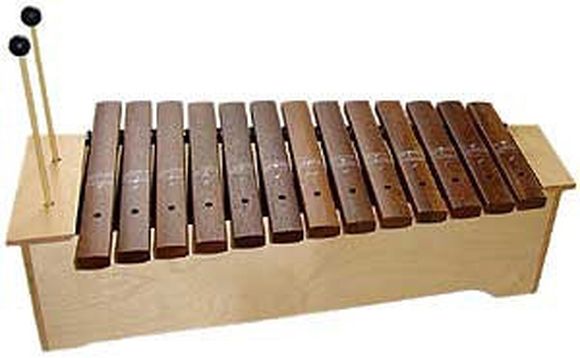
The word xylophone (from the Greek for wooden voice) is used to describe a wide variety of instrument designs, all of which employ the same essential principle, in which a row of wooden keys or plates rests on a sound box. The size of each key determines the note it makes when struck. Variations in tone can be achieved by using different types of wood to make the keys and soundbox.
There are soprano, alto, tenor and bass models, and they can be configured in all kinds of tunings. Diatonic versions are preset to play major and minor scales, and there are chromatic xylophones offering every note in the chromatic scale. The standard tuning is C major, but many C xylophones also come with additional keys tuned to F# and Bb, so that the keys of F-major/D-minor and G-major/E-minor can also be used. Children usually start by using one stick to play the xylophone, but two or even four can be used.
Metallophone
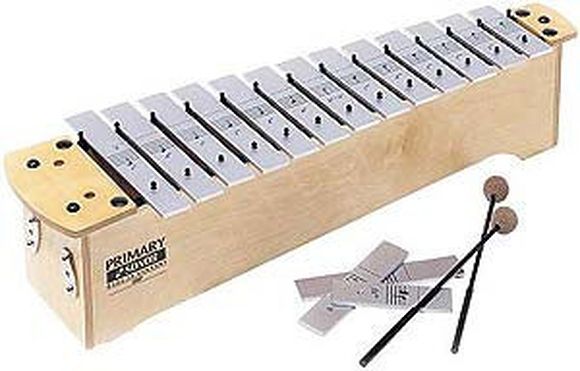
Simply, these are xylophones, but the keys are made of metal. This allows the notes to resonate for longer, if required, as opposed to the cheerful staccato of the xylophone. The thickness of the metal keys gives most metallophones a rich, mellow tone. They are offered in the same versatile key and scale configurations as xylophones.
Glockenspiel
Similar to metallophones, glockenspiels are built with keys made of thicker metal. They tend to have more chiming, bell-like tones than metallophones - soprano and alto models are available.
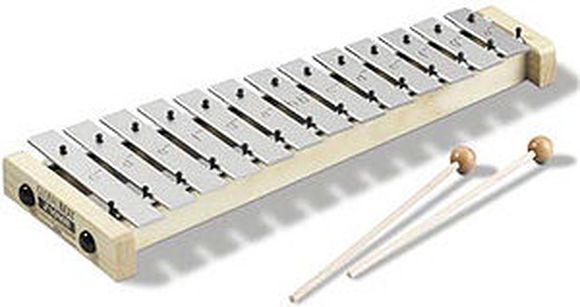
One great advantage of all these melodic percussion instruments is that the names of notes can be clearly marked on each individual key. They provide a quick and simple introduction to musical notation, and to the relationships between the notes. Chromatic models usually have the keys arranged in two rows - larger models may have the keys in two full chromatic scales, one tuned half a tone higher than the other.
Pentatonic instruments
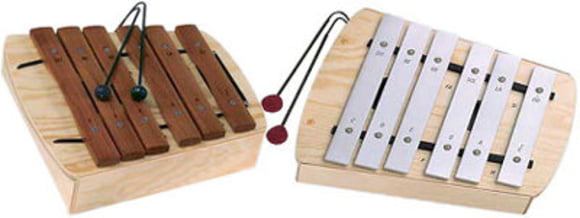
Very young children may start by learning to play pentatonic xylophones or metallophones, usually employing the note sequence C-D-F-G-A. This makes it easy for them to make harmonious music - there are no wrong notes to hit. The names of the notes are engraved on the keys, and the compact form means that players can rest the instrument on their laps - ideal for sitting round in groups to hammer out a tune together.
Chime bars and wooden keys
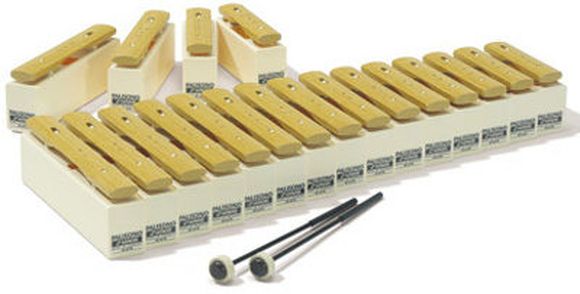
Each bar is tuned to a single note, with a sounding box to help with sustain and tone. They can be arranged into instant instruments, using only the keys required for a particular piece, or each child can be assigned a single note, so that the whole ensemble forms an instrument. Great for group work and learning about notation.
Your Contacts
Product Highlights
Offers
-
Soprano Glockenspiels
-
Soprano Xylophone
-
Tenor/Alto Glockenspiels
-
Children's Glockenspiels
-
Frame/Table Drums

